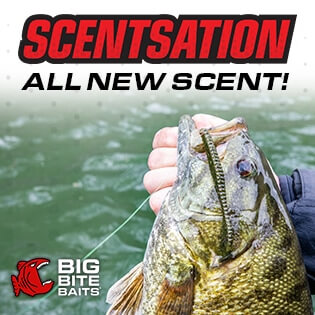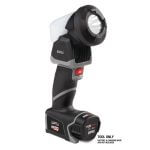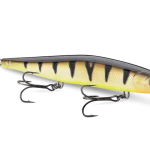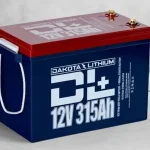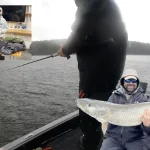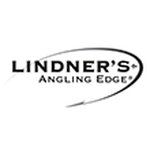The Appeal of Put and Take Trout Fishing
Put and take trout fishing is popular for several reasons. One of the main attractions is the accessibility of these stocked trout. Unlike wild trout, which can be elusive and difficult to catch, stocked trout are more abundant and easier to locate. This makes put and take trout fishing a great option for beginners or anglers looking for a fun and rewarding fishing experience.
Another advantage of put and take trout fishing is the opportunity to catch larger trout. Hatchery-raised trout are often larger in size compared to their wild counterparts. This means that anglers have a higher chance of landing a trophy-sized trout when participating in put and take trout fishing.
Auto Chart Live: Creating High-Definition Maps
One of the key tools that anglers can use to enhance their put and take trout fishing experience is Humminbird’s Auto Chart Live. This innovative technology allows anglers to create their own high-definition maps in real time, anywhere in the world. By using Auto Chart Live, anglers can gain a better understanding of the underwater topography, including humps, drop-offs, and contours, which can greatly increase their chances of success.
The Importance of Depth Control and Lure Selection
When it comes to put and take trout fishing, depth control and lure selection are crucial factors for success. In the early season, when the water is still cold and the fish are relatively shallow, anglers should focus on using lures that run at shallower depths. Lures with smaller bills, such as the Rapala Ultralight Shad, are ideal for targeting trout in these conditions.
As the season progresses and the fish start to move deeper, anglers should adjust their lure selection accordingly. Lures with larger bills, such as the original Rapala, can dive deeper and reach the fish at their preferred depths. It’s important to match the size and action of the lure to the behavior and preferences of the trout in order to maximize success.
The Role of Trout Stocking in Minnesota
Minnesota is known for its abundant put and take trout fishing opportunities. The state has been stocking trout in its mine pit lakes since the 1980s, providing anglers with the chance to catch rainbow trout, brook trout, and occasionally brown trout. Anglers are required to have a trout stamp in order to fish for trout in Minnesota, and the revenue generated from these stamps goes directly towards the management and stocking of trout fisheries.
The mine pit lakes in Minnesota not only provide excellent fishing opportunities but also serve as recreational hubs for activities such as mountain biking, scuba diving, and boating. These activities have transformed what was once an industrial landscape into a thriving outdoor recreation area. The Minnesota Department of Natural Resources (DNR) plays a crucial role in both protecting the natural resources of these lakes and providing access and opportunities for outdoor enthusiasts.
The History of Minnesota’s Mine Pit Lakes
The mine pit lakes in Minnesota were formed as a result of iron mining activities in the 1950s and 1960s. When the mining companies abandoned the pits, they began to fill up with water in the 1960s and 1970s. By the 1980s, there was enough water in these pits to support fish populations, and the DNR started stocking them with trout.
The Benefits of Trout Stocking
Trout stocking in the mine pit lakes of Minnesota has provided anglers with the opportunity to fish for different trout species that are not naturally found in the area. Rainbow trout are the main species stocked, but brook trout and occasionally brown trout are also introduced. Anglers are required to have a trout stamp in order to fish for trout, and the revenue generated from these stamps is used to fund the management and stocking of trout fisheries.
The mine pit lakes have become a popular destination for anglers, attracting people from all over the state and beyond. In addition to fishing, these lakes offer a range of recreational activities, including mountain biking, scuba diving, and boating. The DNR has worked to develop mountain bike trails and provide access to these lakes, turning them into multi-purpose recreational areas.
The Role of the DNR in Managing Minnesota’s Trout Fisheries
The DNR has a dual role in managing Minnesota’s trout fisheries. On one hand, they are responsible for protecting the natural resources of these lakes and ensuring the sustainability of the fish populations. This includes monitoring water quality, regulating fishing practices, and implementing conservation measures.
On the other hand, the DNR is also focused on providing opportunities for people to enjoy the outdoors and engage in recreational activities. They work to develop and maintain access points, trails, and facilities that allow people to fish, bike, dive, and boat in these mine pit lakes. The DNR recognizes the importance of balancing conservation efforts with providing opportunities for outdoor recreation, and they strive to create a sustainable and enjoyable experience for all.
The Legacy of Minnesota’s Mine Pit Lakes
The mine pit lakes in Minnesota have a rich history and a bright future. From their origins as abandoned mining pits to their transformation into thriving recreational areas, these lakes have become a testament to the resilience and adaptability of nature. They provide a unique and diverse fishing experience, with the opportunity to catch a variety of trout species, including rainbow, brook, and brown trout.
But the appeal of these lakes goes beyond fishing. They offer a range of activities for outdoor enthusiasts, from mountain biking on the trails to scuba diving in the depths. The mine pit lakes have become a beloved destination for locals and visitors alike, providing a place to connect with nature and enjoy the beauty of Minnesota’s outdoors.
Conclusion
Put and take trout fishing in Minnesota’s mine pit lakes offers a unique and exciting experience for anglers. The stocking of trout in these lakes has created abundant fishing opportunities, with the chance to catch a variety of trout species. The mine pit lakes also serve as recreational hubs, providing access to activities such as mountain biking, scuba diving, and boating.
The Minnesota Department of Natural Resources plays a crucial role in managing and maintaining these lakes, ensuring the sustainability of the fish populations and providing access and opportunities for outdoor enthusiasts. The mine pit lakes are a testament to the resilience of nature and the importance of balancing conservation efforts with recreational activities.
So, whether you’re an avid angler looking for a new fishing spot or an outdoor enthusiast seeking adventure, consider exploring the mine pit lakes of Minnesota. You never know what you might catch or discover in these unique and vibrant bodies of water.
Small, cool waters like strip pits are mini hot spots for stocked trout. Fishing is easy, fun and accessible to everyone.
Small, cool waters like strip pits are mini hot spots for stocked trout. Fishing is easy, fun and accessible to everyone.


